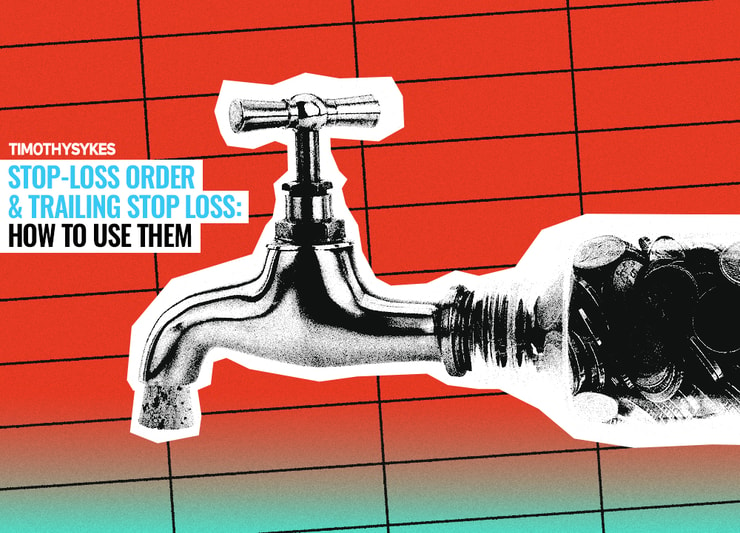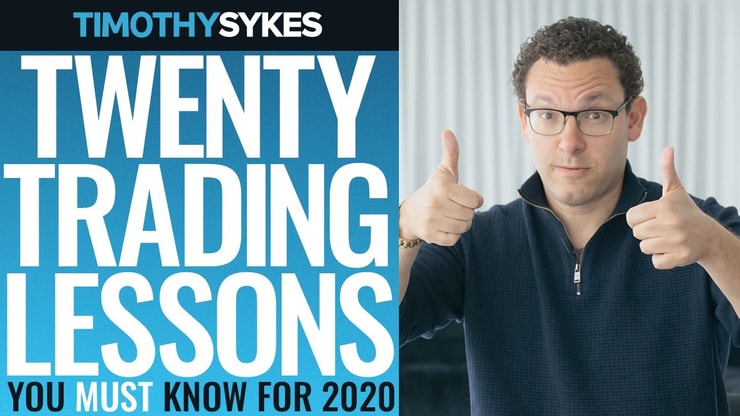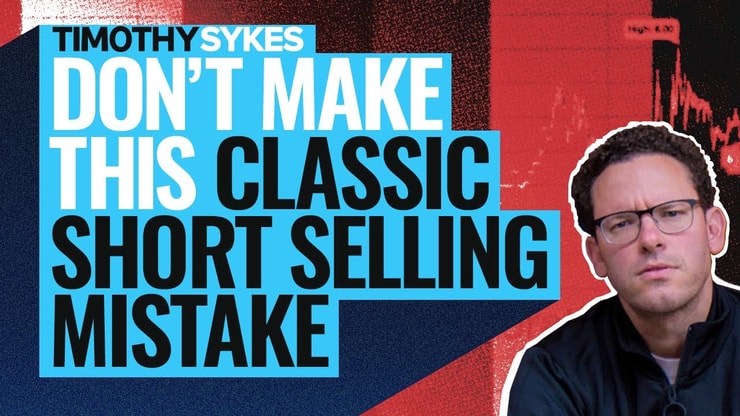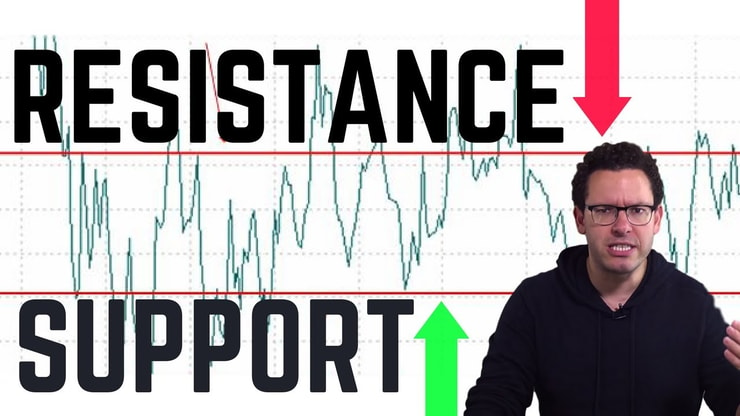As a new trader, you may have heard the terms ‘stop loss’ or ‘stop-loss order.’ But what do they mean? How do traders put them to use?
Stop loss sounds like something can prevent you from losing money … Wouldn’t that be nice? If only trading were that simple.
The hard truth is that trading is risky. There’s no way to guarantee you won’t lose money. But using a stop-loss order can help you keep losses to a minimum — especially if you can’t monitor your positions all day.
Of course, there’s more to it than that.
Let’s discuss what a stop-loss order is, how to use it, and how it can be a useful tool.
Table of Contents
- 1 What Is a “Stop Loss?”
- 2 Why Is a Stop-Loss Order Important?
- 3 Advantages of Stop-Loss Orders
- 4 Drawbacks of Stop Losses
- 5 Types of Stop-Loss Orders
- 6 How Do You Calculate Stop Loss?
- 7 Stop Loss vs. Stop Limit: What’s the Difference?
- 8 2 Solid Stop-Loss Strategy Tips
- 9 2 Stop-Loss Mistakes to Avoid
- 10 Do Professional Traders Use Stop Losses?
- 11 Frequently Asked Questions About Stop Losses
- 12 Conclusion: Should I Set Stop Losses?
What Is a “Stop Loss?”
A stop-loss order is one of the most commonly used methods for limiting losses from a position.
You enter your stop loss based on the maximum loss you’re willing to take on a trade. If the stock price falls below your stop level, the position will be closed at the current market price. This prevents further losses.
There are different types of stop-loss orders: regular stop loss, trailing stop loss, and stop-loss limit order. I’ll go into those more later.
How Does a Stop-Loss Order Work?
A stop-loss order works like any other sell order. The difference is that you enter the order shortly after you enter a position, not when you want to sell.
From there, the order becomes automatic. Once the stock hits your stop-loss price, the order becomes a market order and will execute at any price.
It can be like a safety net for people who can’t be in front of their computers all day watching their positions.
Why Is a Stop-Loss Order Important?
A stop-loss order can potentially protect you from huge losses. Managing your risk is the most important part of trading. That’s why my rule #1 is cut losses quickly.
You can’t let one bad trade take you out of the game for good.
Advantages of Stop-Loss Orders
The advantage of a stop-loss order is that it will execute a sell order for you if you can’t watch a trade all day.
It can also be a good tool for traders who don’t have the discipline to cut losses quickly. If you can’t bring yourself to cut losses, use a stop-loss order every time you enter a position.
It all sounds rosy, but there’s a downside…
Drawbacks of Stop Losses
One reason I don’t like using stop-loss orders is because market makers see them.
Sometimes they like to bring the price down to the stop losses. That shakes traders out of their positions. Then they can ramp the stock back up.
They do this to add liquidity to the market. But it can also be a result of too many traders using the same level to place their stop-loss orders. (More on that later, too.)
Another drawback is that with a quick drop in price or a gap down, your order could execute at a much lower price than you anticipated.
Types of Stop-Loss Orders
There are a few different ways you can enter a stop-loss order. Let’s break it down.
Trailing Stop Loss
A trailing stop loss works like a stop-loss order. It will close out your position if the trade hits your stop-loss price. But the nice thing about the trailing stop loss is that once your position starts to go in your favor, the stop loss follows the stock’s rising price action.
It goes from minimizing losses to protecting profits as the price reaches new highs. You can specify the amount you’re willing to lose without limiting your profits.
You can use trailing stops for stocks, options, and futures exchanges that support a traditional stop-loss order.
Let’s look at an example…
Example of a Trailing Stop
- Purchase price = $10
- Last price at the time of setting the trailing stop = $10.05
- Trailing amount = 20 cents
- Immediate effective stop loss value = $9.85 ($10.05 – $0.20 = $9.85)
If the market price climbs to $10.97, your trailing-stop value will also rise to $10.77. If the last price now drops to $10.90, your stop value will remain intact at $10.77.
If the price continues to drop — this time to $10.76 — it’ll hit your stop level and immediately trigger a market order. Your order would be sent based on the last price of $10.76.
Assuming that the bid price was $10.75 at the time, the position would close at this price. The net gain would be 75 cents per share.
More Breaking News
- Top Bitcoin Stocks to Watch Under “Crypto Emperor Trump”
- BigBear.ai’s Journey in the Stock Market: Rising Trends and Challenges
Regular Stop Loss
A regular stop loss has a fixed value, but you can readjust it. If you were using a regular stop loss in the example above, your sell order would execute once the price went all the way back to $9.85.
If you’re not there to monitor your position and sell when you’re up, you’d have a loss instead of a nice gain. Using a trailing stop could be an advantage in this case.
Can You Use Both of These Types of Orders?
Yes, you can use both types of orders simultaneously. But the trailing stop should be lower than your regular stop loss.
An example of this is to have a stop loss set at 10 cents below your entry and the trailing stop at 15 cents below your entry. As the price increases, the trailing stop will surpass the fixed stop loss, making it obsolete.
Remember to cancel your original stop loss when the trailing stop surpasses it.
It can be tricky to use a trailing stop with highly volatile stocks, especially during the first hour of the trading day.
The market has been insanely volatile in 2020. Learn how you can better navigate volatile stocks now and in hot markets to come. Check out my no-cost “Volatility Survival Guide.”
Example: What Is a Good Stop-Loss?
Let’s say I’m watching a stock for a multi-day breakout. It finally breaks through resistance (the breakout level) of $3.50. So I buy 1,000 shares at $3.52. I can set my stop loss just below the breakout of level, around $3.45.
Previous resistance usually becomes support. So if the breakout is going to work in my favor, it will pull back and retest the breakout level. Then it should bounce and continue higher.
Ideally, my stop loss isn’t triggered on the pullback. That means I can stay in the trade until it hits my profit target. If it weakens, I get out.
Stop-Loss Limit Order
A stop-loss limit order is when you enter a stop loss with a limit price. It’s similar to a buy limit order. When you enter a limit price, your order will only execute at that price.
If you use a stop loss limit order, you’re saying you only want to sell for the specified limit price. This can be risky. If a stock is tanking fast, your order might not execute. You could be stuck in your losing position until you change your order.
How Do You Calculate Stop Loss?
Using a stop loss doesn’t require a calculation. Unless you plan to set your loss based on a percentage of your account or position size.
If you’re risking 1% of your account on each trade, then your risk will change each time depending on the size of your account. If your account is growing then your risk will also be getting larger. But if you’re taking losses, then the dollar amount of your risk will also go down.
Where to Place a Stop Loss Order When Buying
There are a few ways you can cut losses quickly. When going long in a trade, you could put your stop loss below a support level, just below your entry, or at breakeven once the trade is going in your favor.
It’s all about how much you’re willing to risk in that trade.
Remember, it’s not an exact science. Support levels don’t hold exactly to the penny. And some stocks are choppier than others. They can shake you out of your position. That’s why I don’t trade choppy stocks.
Where to Place a Stop Loss Order When Short Selling
If you’re short selling, put your buy order price just above the price level you’re risking on the chart.
Short squeezes can be quick and powerful — so be careful. Most short sellers are risking off similar levels. So when a mass of buy orders is hit, the stock price can shoot up FAST. There’s a greater risk of not having your order executed or it being executed at a much higher price.
There’s potential for infinite losses when shorting. This is why I don’t recommend short selling for new traders.
Stop Loss vs. Stop Limit: What’s the Difference?
It’s important to know the difference between a stop-loss order and a stop-limit order. It can be the difference between having your order execute or being stuck with a growing loss.
A stop-loss order becomes a market order once the price triggers the order. That means you could get executed a lot lower than you wanted, but at least you’ll get out.
With a stop-limit order, your order will only execute at the price you enter in the order. It leaves you exposed to more risk if the stock keeps tanking without your order executing at your limit price.
2 Solid Stop-Loss Strategy Tips
Here are two stop-loss strategies to consider when deciding where to place your stop loss.
One Size Doesn’t Fit All
When it comes to stop losses and risk management in general, you can’t have a one-size-fits-all mindset. You can’t go into every trade risking the same amount. There are far too many variables, such as…
How far is your entry from your risk level? What’s your position size? Is it an A+ setup?
These are all things I consider in my Sykes Sliding Scale before I enter any trade. Read this post to learn more, then go deeper with my “Trader Checklist Part Deux” DVD. It’s where you can learn all my trading indicators.
Support and Resistance
A popular stop-loss strategy for day traders is using support and resistance levels on a chart. Traders usually place stop-loss orders just under support or just above resistance if they’re short selling.
But this is where you run into the problem of everyone using the same level as a stop. The stock can dip and take out all the stop losses … And then continue its uptrend. It can be frustrating and might tempt you to widen your risk level. This can lead to bad discipline.
So if you’re using stop losses and you get shaken out of your position, don’t let it stop you from cutting losses next time. Stocks don’t always recover from a dip below support. Better to trade safely.
2 Stop-Loss Mistakes to Avoid
We talked tips already. Now let’s discuss two stop loss mistakes you should try to avoid at all costs.
Too Much Risk
If you’re trading with a small account, you can’t risk too much in one trade. Miss a big spike? You have to learn to be OK with that.
If you chase an entry and have a wide stop loss, you’re putting your account at greater risk. That’s how traders can blow up. Stay in the game. Be patient and wait for the best entries for your strategy to minimize your risk.
Not Knowing Your Risk Level
Entering a trade without a pre-determined risk level is trading without a strategy. Before you enter a trade, you need to know where you’ll get out and where you’d ideally like to take profits. It’s all part of having a trading plan.
My students and I always trade with a plan. To learn about my patterns and strategies, apply for my Trading Challenge. It’s for the most dedicated students who take their education and trading seriously.
Do Professional Traders Use Stop Losses?
Most professional day traders use mental stops. Active traders are usually at or near their computers during market hours so they don’t need to use stop-loss orders. They actively manage their positions.
Frequently Asked Questions About Stop Losses
Can a Stop Loss Fail?
Yep. A stop loss can fail to execute your sell order at the price you want. And it could execute at a much lower price if the stock gaps down. If you use a stop-limit order, your order could fail to execute at all.
Is It Possible to Use a Stop Loss Order in Forex Trading?
Yes, you can set up a stop-loss order with your forex broker to minimize losses. Forex isn’t my thing — trading penny stocks is. Check with your broker.
Do Stop Loss Orders Expire?
This depends on the type of order you enter. Some types of orders are “good until market close”, “good until executed”, or “good until canceled.” If you have a good until market close order, then the order will expire at the market close.
Should I Put a Stop Loss Order in Every Day?
I personally don’t use stop loss orders. Instead, I use mental stops. If you’re not disciplined enough to cut losses when a trade goes against you, try using stop losses to protect your account. That can potentially help you stick to your trading plan.
Can Brokers See Stop Losses?
Brokers can see orders within their brokerage, and their job is to send orders to the market. Market makers see all orders and are responsible for putting the buyers and sellers together to complete a trade.
Conclusion: Should I Set Stop Losses?
Hopefully by now, you know more about stop-loss orders and how to use them. Whether you use a stop loss order is up to you. It’s all about your preference and experience.
If you can’t accept losses or cut them quickly, you might want to try using stop-loss orders until you learn better trading discipline.
Also, if you have a full-time job and can’t watch your positions all day, it’s important to have a strategy for protecting your account.
I personally don’t use stop loss orders. I like to use mental stops. But you have to do what works for you.
What do you think? Do you use stop-loss orders? Let me know in the comments … I love to hear from you!







Leave a reply